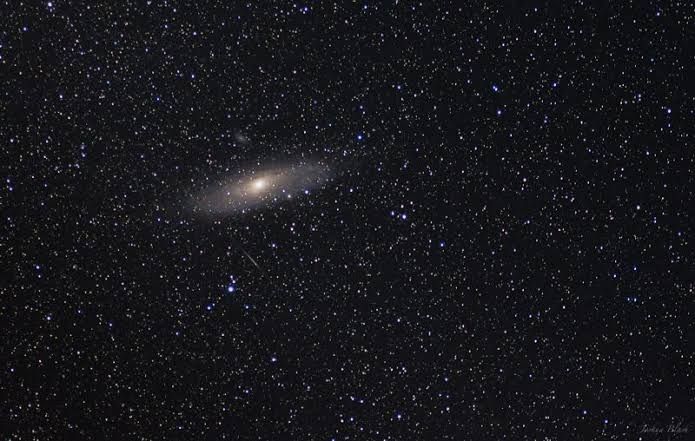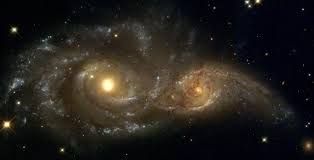Meet The Closest Big Spiral Galaxy To Our Milky Way: Andromeda Galaxy
Jul 04, 2019 • 10 views
Night sky often makes a person more enthusiast about our galaxy. Every grown-up man can relate the time of their childhood they when they used to look up in the night sky and wonder how beautiful is our sky from earth. But the stunning lights visible with our unaided eye fascinate most of us. One of such pretty sight in the night sky is the Andromeda galaxy that appears as a smudge of light in one corner of the night sky. This is a galaxy with an impressive, turbulent patch of cosmos closest to our own Milky Way galaxy.
Essential facts on Andromeda:
As mentioned, it is the closest big spiral galaxy to our milky way. Its alternative title is Andromeda Nebula(catalog numberM31 and NGC 224). It is visible with the naked eye as a milky blur in the moderate dark sky, especially in less populated and less polluted areas. Even at a distance of 2.5 million light-years away from Earth, this Galaxy can be seen with the unaided eye.
Andromeda Galaxy has a diameter of about 200,000 light years and it shows resemblance to our milky way galaxy. In 1962, soon after the invention of the telescope, the Andromeda Galaxy was rediscovered and was thought to be a part of milky way galaxy eventually. But in the 1920s , it was American astronomer Edwin Powell Hubble determines conclusively that Andromeda Galaxy is actually a separate galaxy far from the milky way.
Named after Andromeda constellation, the Andromeda Galaxy is twice the size of the milky way galaxy. Its diameter is almost more than twice the diameter of the milky way. Andromeda looks larger than the moon in the sky even after it is located at such a huge light year apart.
Andromeda Galaxy holds a huge number of stars which makes it biggest galaxy in the local cluster. The number of stars it holds is around one trillion!! In Andromeda Galaxy, blue stars are aging stars while blue stars are generally young and hot stars. The sun-like stars having an exposed blue-hot cores fills the center of the Galaxy. Around 450 globular clusters have been observed in Andromeda Galaxy while the number is 200 for milky way galaxy.

Collision with milky way galaxy in the next 4 billion years:
Now interestingly, this huge Andromeda Galaxy is heading towards milky way galaxy at a speed of about 400,000 kilometers per hour!! It is estimated that this huge war will take place in 3.75 billion years. That’s pretty alarming but what would happen after collision?
The answer to this question is that it is possible for Earth to survive this collision as galaxies have mostly empty space. The incredible show of the collision could be seen from Earth in the sky for many years. It is very much assumed that this will continue until the supermassive black holes at the center of both the galaxies come close enough to fuse as one. The Galaxy so formed would be known as an elliptical galaxy. And if the sun doesn’t make its way to gobble Earth! Then it’s possible to witness this huge phenomenon from Earth.

